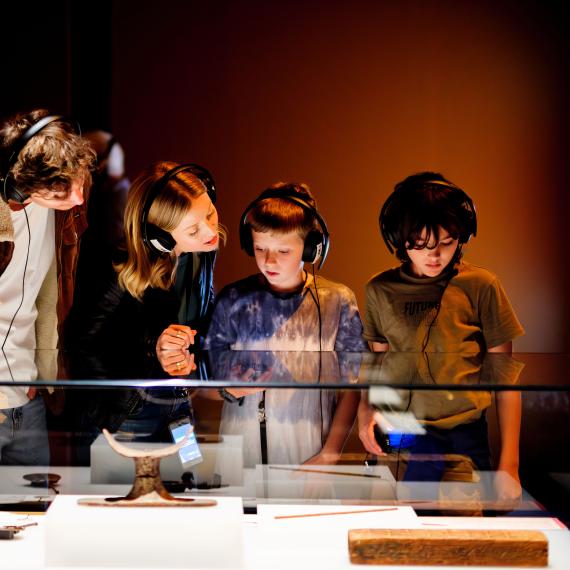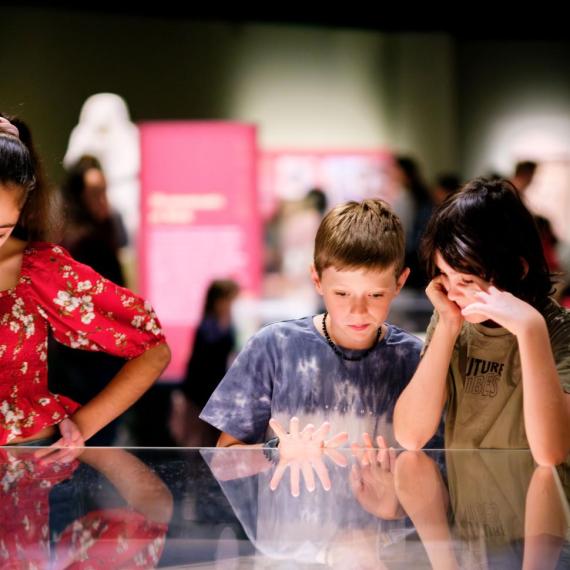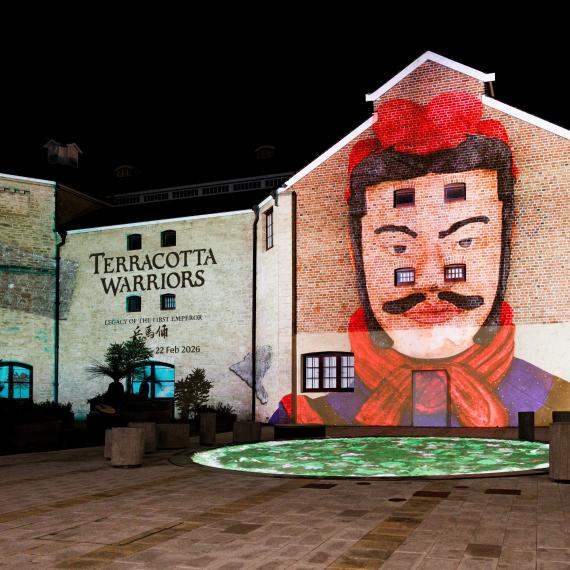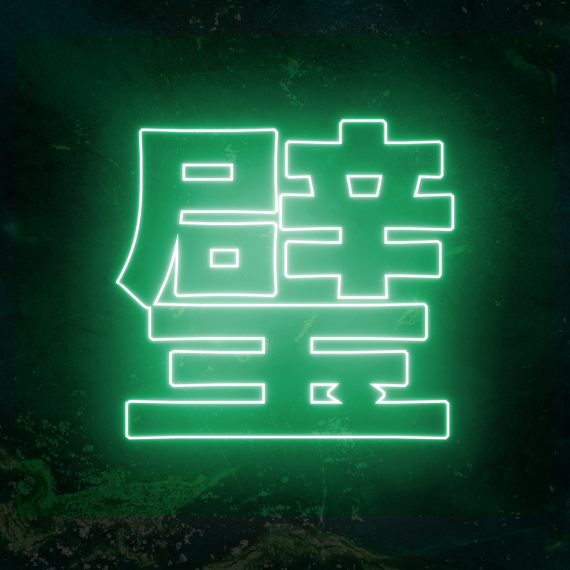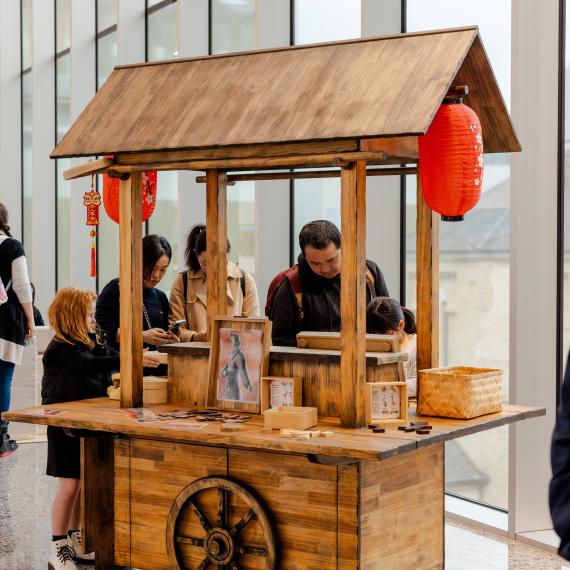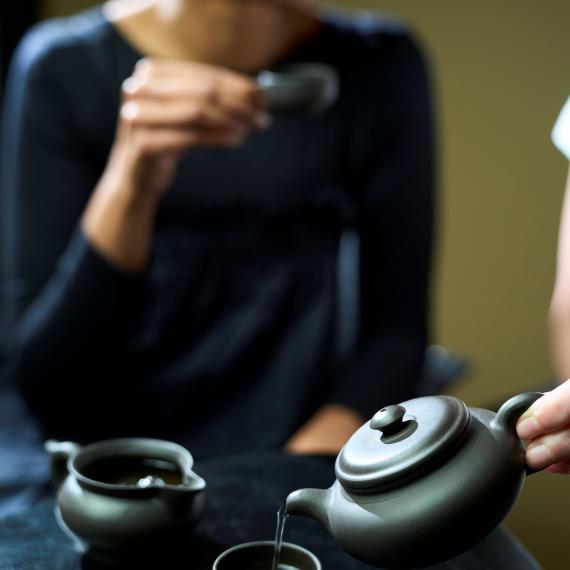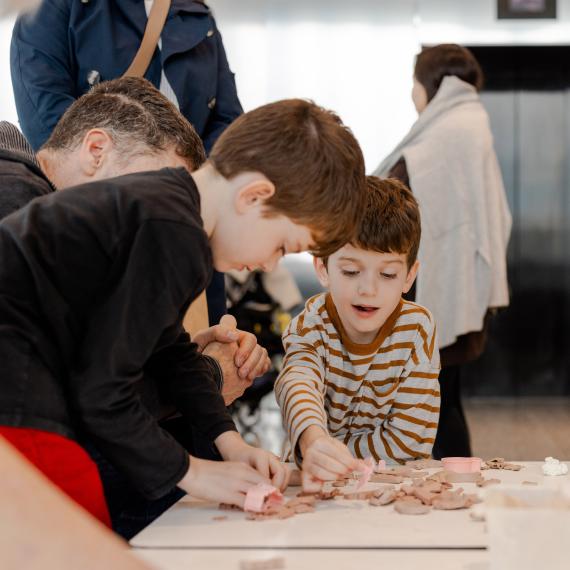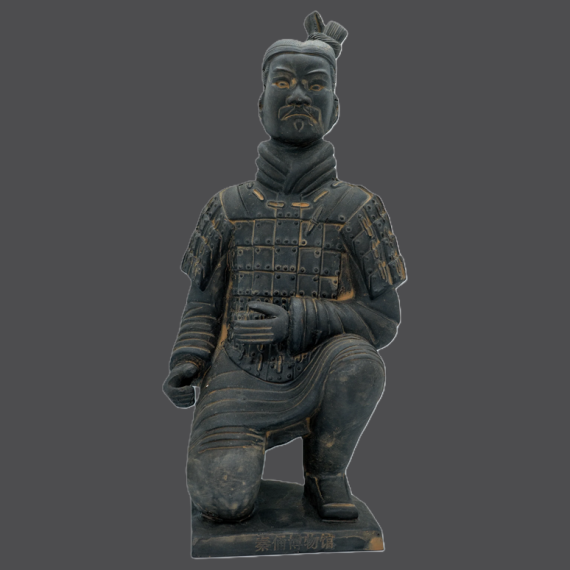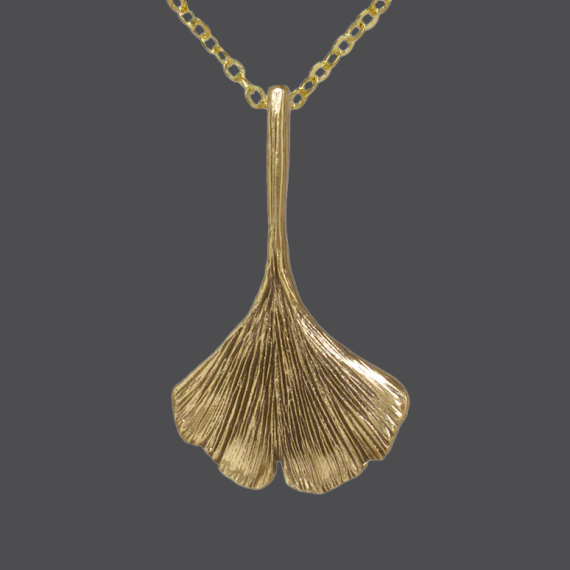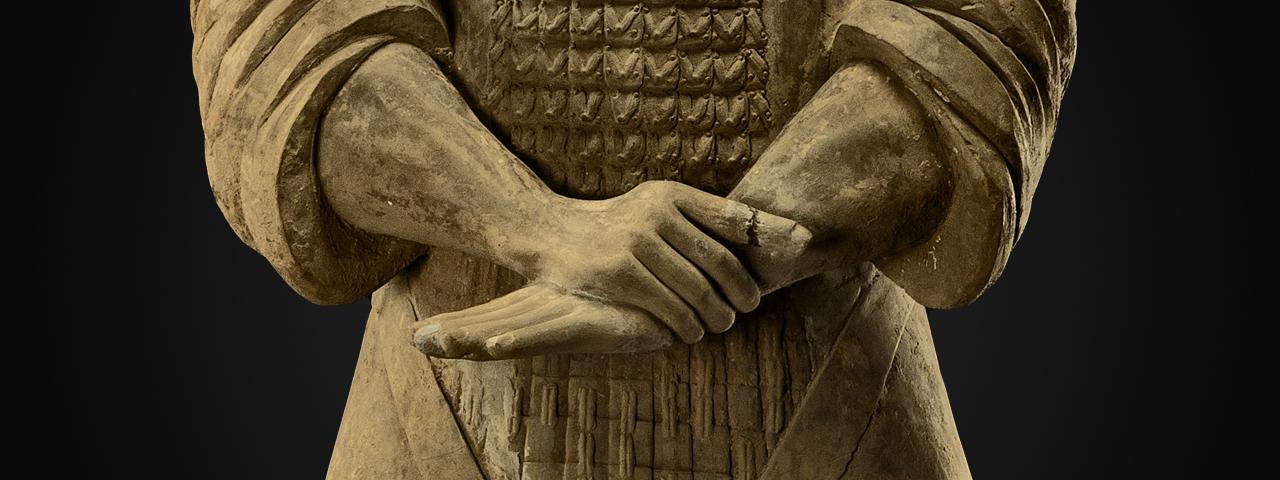
Come face to face with one of the world’s greatest cultural treasures in this groundbreaking exhibition, only in Perth, Western Australia.
Location
Perth Cultural Centre, Perth / Boorloo
Dates
Dates
Saturday 28 June 2025 – Sunday 22 February 2026
Sessions available daily from 9:30am, Museum closes at 5pm
Accessibility
This exhibition is mostly accessible. Learn more about accessibility in this exhibition >
Essential information
Tickets for this exhibition include a scheduled arrival time.
During peak periods—especially weekends and school holidays—high demand can lead to queuing and longer-than-expected wait times for exhibition entry, beyond your scheduled arrival time.
Ticket options
Exhibition entry
Standard | $30
Concession | $25
Junior (5 – 15) | $15
Junior (0 – 4) | Free
Companion Card | Free
Family (2 Standard & up to 3 Junior) | $75
Special events
Season passes
Unlimited visits to this exhibition
Standard | $90
Concession | $75
School excursions
Facilitated and self-guided education experiences available
About this exhibition
Step into the extraordinary world of China’s first emperor Qin Shihuang, to explore his life, legacy, and afterlife.
Immerse yourself in cutting-edge technology and deepen your understanding of this remarkable chapter in human history, with more than 225 exceptional Chinese artefacts, including the warriors, appearing together globally for the first time.
Created by the WA Museum in collaboration with, Shaanxi Cultural Heritage Promotion Centre and the Emperor Qinshihuang's Mausoleum Site Museum and including some recently excavated pieces, this is the boldest museum exhibition ever held in Western Australia.
Exhibition overview
Ancient China gave rise to some of the world’s greatest cultural and scientific achievements as well as some of the most powerful imperial dynasties – one of which changed the face of China forever. Relics unearthed in the ancient tombs of Shaanxi Province, including an army of terracotta warriors, tell the story of an ancient and enduring culture.
Across seven distinct areas, you’ll journey through the life, legacy and afterlife of China’s first emperor, Qin Shihuang – from ancient daily life to the monumental tomb built to secure his rule in eternity.
More than 2,000 years ago, China was transformed as the Qin dynasty conquered the warring states and unified an empire. King Ying Zheng, who took the throne at just 13 and began ruling at 22, built on the work of his predecessors and established the first unified state in Chinese history.
Be immersed in the political and cultural landscape that shaped the Qin and Han dynasties, highlighting how the Qin developed from a small principality into a powerful empire, as this striking digital experience sets the scene for the stories and objects that follow.
Ancient China was once a land of seven competing kingdoms. Over centuries of warfare, the Qin state built its strength through military innovation and strategic infrastructure. By 221 BCE, The King of Qin had unified China under one central government and declared himself Qin Shihuang, the First Emperor of Qin.
Advanced cavalry and weaponry brought military advantage, while sweeping reforms in infrastructure, writing, currency and law transformed the daily life of its people. These innovations laid the foundation for a system that endured for centuries. See how the Qin transformed China and created a new kind of empire, laying the foundation for a system that endured for centuries.
Highlights to look for: horse and chariot objects, ancient bronze vessels, palace tiles, coins.
Beyond the Emperor’s ambitions, daily life in the Qin and Han dynasties was marked by artistry, craftsmanship, and cultural tradition. Society was hierarchical with clear distinctions between the elite and ordinary. Most people worked the land, while those in the upper classes held prestigious positions with greater privilege and access to expensive materials and refined pursuits.
Learn how the tools of everyday life reveal the sophistication of these societies, while musical and ceremonial objects offer a glimpse into the spiritual and creative lives of the time.
Highlights to look for: bronze and pottery vessels, jade objects, musical instruments, gilded belt hooks and official seals.
In ancient China, death was seen as a continuation of life. Every human had a body nourished by the earth, and a spirit energised by qi (‘life force’). After death, the physical body was laid to rest while their soul could travel. Belief in an afterlife led to the construction of immense tombs, filled with possessions to serve the deceased for eternity.
Encounter figures of warriors, attendants and animals that reflected the world of the living, alongside miniature models and rare artefacts that trace the evolution of funeral traditions during the Qin and Han dynasties.
Highlights to look for: painted cavalry and infantry figures, miniature models, pottery animal figures, and rare golden artefacts.
Qin Shihuang’s mausoleum is the largest and most ambitious imperial tomb ever built for a single ruler in China. Construction began when he was just thirteen, and over nearly four decades, more than 700,000 workers helped shape an underground world that could sustain the first emperor’s rule in the afterlife. Now a UNESCO World Heritage site, it remains one of the world’s largest archaeological reserves and a site of ongoing discovery.
Ongoing excavations have revealed remarkable details of this hidden world, including a pleasure garden with bronze waterbirds and terracotta musicians. See these incredible objects up close, alongside finely crafted chariots and other remnants of the emperor’s vast tomb complex.
Highlights to look for: replica bronze chariots, bronze swan, and terracotta stable attendant.
The centrepiece of the exhibition, life-sized terracotta warriors stand as protectors of the Emperor’s afterlife. One of the greatest archaeological discoveries of the 20th century, they were found in vast underground pits east of the mausoleum and resembled a real military encampment. Their ranks reflect the highly ordered structure of the Qin military, which allowed men to rise through service and skill, with uniforms, weaponry and position denoting status and role.
Come face-to-face with several of these powerful figures, each remarkably detailed with unique facial features, hairstyles and body types. Then, learn about the techniques used to construct and restore the warriors, as well as the finely made weapons and stone armour they once wielded.
Highlights to look for: general, officer, archer, cavalry, charioteer figures, armoured soldier, kneeling archer, solider, horse, weapons and stone armour.
Qin Shihuang’s tomb chamber remains sealed — its secrets preserved beneath layers of earth. Ancient records describe the tomb as containing detailed models of palaces, pavilions and offices, a ceiling that mirrors the night sky with constellations, and flowing rivers of mercury feeding into a miniature ocean. To deter intruders, crossbows were reportedly set to fire at anyone who entered.
Though the burial chamber has never been opened, elevated mercury levels have been detected within the pyramid, adding weight to these accounts.
As you enter this final digital immersive experience these vivid accounts are brought to life, offering a breathtaking glimpse at the First Emperor’s vision for the afterlife, and leaving you with a sense of awe at the mysteries still buried beneath the earth.
Object highlights
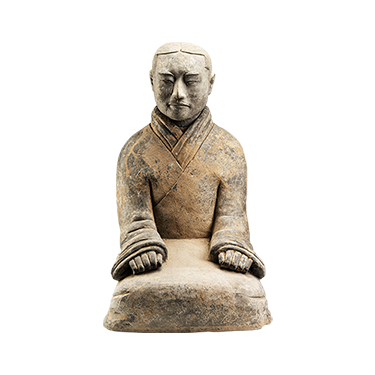
Seated attendant
A half-sized terracotta groom who was an afterlife attendant in the imperial stables.
Emperor Qinshihuang’s Mausoleum Site Museum
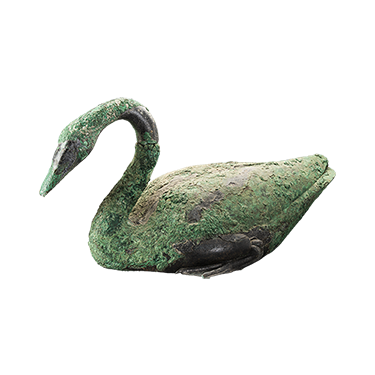
Bronze swan
Originally painted bright white, this figure is thought to represent a Whooper Swan native to northern China.
Shaanxi Academy of Archaeology
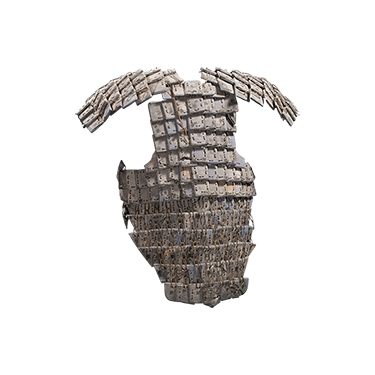
Stone armour
Made of up to 600 stone pieces, this intricate suit of armour is held together by bronze wire threaded through holes drilled in the plates’ corners.
Emperor Qinshihuang’s Mausoleum Site Museum, Shaanxi Academy of Archaeology
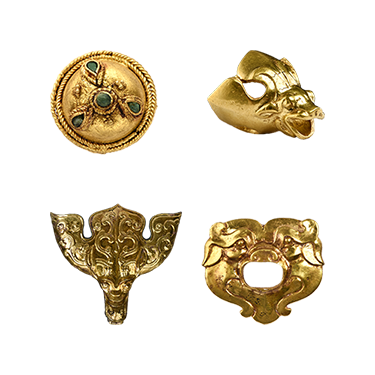
Gold Ornaments
Making their international debut, this collection of gold ornaments was recently uncovered in the Nanling tomb of Empress Dowager Bo, the mother of Emperor Wen and grandmother of Emperor Jing.
Shaanxi Academy of Archaeology
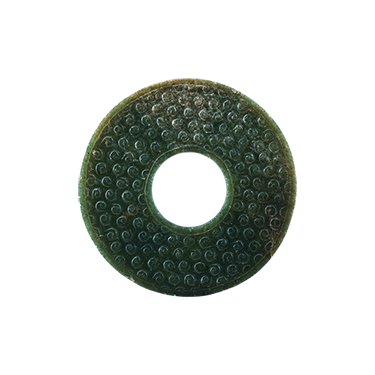
Ritual jade bi disc
An ancient Chinese symbol of heaven, this jade bi disc features a circle of heaven at its perimeter, and a spiral grain pattern around its edge.
Baoiji Chencang District Museum
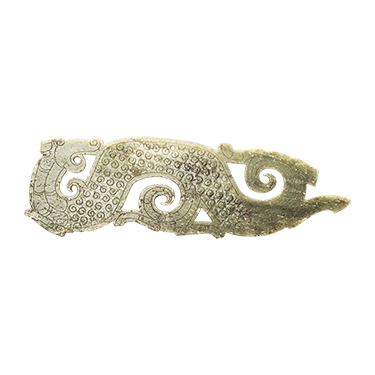
Jade dragon pendant
A treasured object and symbol of power, this pendant – fashioned from a large piece of grey-green jade – was interred with its owner in his tomb upon his death in the Warring States period.
Xunyi County Museum
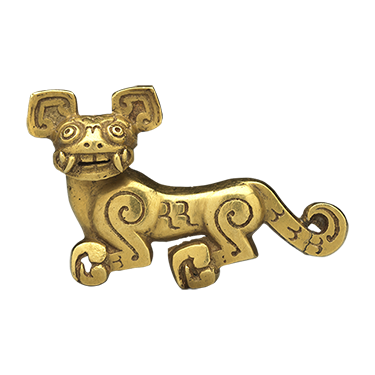
Golden Tiger
This fascinating solid gold tiger – with incised linework – symbolises courage and is believed to have been worn as a personal adornment.
Baoji Chencang District Museum
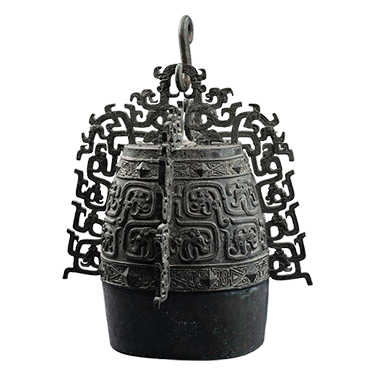
Bo bell of the Duke of Qin
This 64 cm, 46.5 kg bronze bo bell was one of three huge bells found together and was used in ceremonies.
Baoji Bronze Museum
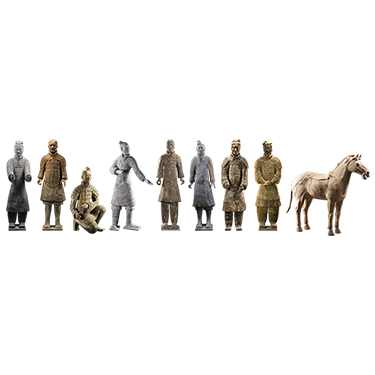
Terracotta Warriors
A centrepiece of the exhibition and a source of global fascination, these life-sized terracotta figures and cavalry horse were part of the Terracotta Army, created to protect Emperor Qin Shihuang in the afterlife.
Emperor Qinshihuang’s Mausoleum Site Museum
Exhibition video playlist
Planning your visit
Check the WA Museum Boola Bardip visit planning webpage for information about public transport, nearby parking, Epoch café, and other amenities.
A Legacy Worth Travelling For
Step into the world of emperors and warriors with Terracotta Warriors: Legacy of the First Emperor—then retreat to the luxury of Crown Hotels.
Book your stay and receive complimentary tickets to this landmark exhibition, where ancient power and timeless artistry meet.
Make it a staycation steeped in culture, or a getaway fit for a dynasty.
Limited packages available. T&Cs apply.
Given the popularity of the exhibition, we want to ensure an enjoyable experience for all visitors. This means, managing the flow of visitors through the exhibition space.
Booking ahead is the best way to secure your preferred session time, as door sales may be limited.
You’re welcome to arrive anytime within your half hour session time. Due to popularity, it is likely you will have to queue before entering the exhibition. We encourage you to arrive as early as possible within your half hour session time to limit queuing time.
Please arrive as soon as you can. Be aware that you may need to wait longer to enter the exhibition.
Due to high demand, we may not be able to change your session time.
Requests must be made at least 72 hours before your visit. When booking, please select a time that suits you.
To request a change, call us on 1300 134 081.
You can book up to 50 tickets at a time online, depending on the availability of your desired session. If you are booking for a group of 20 or more, we offer discounted group pricing - however, this is currently only available by booking directly through our team. To access group pricing, please contact us via email at reception@museum.wa.gov.au or phone 1300 134 081.
Yes. Boola Bardip Fan, Super Fan and Friend Members enjoy discounted ticket pricing for the exhibition, Season Pass and selected public programs. To become a member, visit Membership.
A Season Pass allows you to return as often as you like to experience the exhibition in its full scale, at your own pace. Terms and conditions apply, such as the ticket is non-transferable and is subject to a fair use policy.
Yes, you can convert your standard or concession exhibition ticket into a Season Pass during your visit, just visit our friendly front of house staff. This option is only available on the day of your visit.
After purchasing your tickets, you’ll receive a confirmation email with a PDF attached. You can either print this at home or show the digital version on your phone at the exhibition entrance.
If you’ve purchased a Season Pass, you will still need to book a session time for each visit, and a ticket will be issued for that session. Just present that ticket (printed or digital) on arrival.
We recommend allowing at least one hour for your visit.
If you would like more time to explore, a Season Pass lets you return as often as you like throughout the exhibition, from 26 June 2025 – 22 February 2026.
Once you leave the exhibition to explore other parts of the WA Museum Boola Bardip or to go about the rest of your day, re-entry isn’t permitted, so we encourage you to plan your visit to enjoy the full experience.
If you need to step out briefly (for example, to use the bathroom), please speak to one of our friendly staff before exiting and they will assist with your re-entry.
You’re welcome to explore the rest of the museum as well as the exhibition, however, you will need to also purchase a general admission ticket (unless you’re a Boola Bardip Fan, Super Fan or Friend Member).
If you purchase your exhibition and general admission tickets in the same transaction you will receive a 50% discount on your general admission ticket.
Unfortunately, no refunds are available. Tickets cannot be exchanged within 72 hours of your booked session time.
No, refunds are not available, as stated in our Ticketing Terms & Conditions.
Frequently asked questions – Exhibition content
This is the first time this collection of objects has been curated together. Nearly three quarters of the objects have never been seen in Australia and almost half have never left China. Coupled with all new immersive multimedia experiences, this exhibition is like no other Terracotta Warrior exhibition ever created.
Not even close! This exhibition is very different to what was displayed in Victoria 2019, and Perth in both 1983 & 2002. Only seven artefacts are common to the Victorian display and only one item is identical to the Perth 2002 display. Of the terracotta figures themselves, three were previously on display in Victoria, and only one in Perth in 2002, the figures are different to those exhibited in 1983.
This exhibition was designed and developed by the WA Museum, and all of the digital content is new, and bespoke.
The exhibition includes ten Terracotta Army figures - eight warriors, a seated attendant and a saddled horse. These are part of the more than 225 artefacts on display from China, many of which have never been seen in Australia before.
Ten is the maximum number of Terracotta figures that can be loaned internationally from China at any one time.
Yes. All the Terracotta figures in this exhibition are genuine ancient artefacts from China, on loan from Emperor Qin Shihuang’s Mausoleum Site Museum. Additional artefacts in the exhibition are on loan from 17 other museums across China.
These life-sized sculptures were created over 2,000 years ago to guard the tomb of China’s First Emperor, Qin Shihuang, and remain one of the world’s most extraordinary archaeological discoveries. Like most warriors unearthed at the site, they were found in fragments and have been carefully reassembled by expert conservators.
The exhibition explores burial practices and beliefs about the afterlife in Ancient China; however, it does not contain human remains.
The exhibition draws on cutting-edge multimedia to create immersive experiences and interactive elements including learning activities and model objects.
Frequently asked questions – Visiting the exhibition
There are no bathrooms within the exhibition itself, but our staff will be happy to direct you to the nearest facilities. Just ask any team member if you need assistance.
Yes, however flash photography, tripods or commercial photography is not permitted.
Please be mindful of other visitors when taking photos.
Commercial filming and photography is not permitted without seeking written approval from the WA Museum in advance. For further information visit our Media Centre or email media@museum.wa.gov.au
No, food and drink are not allowed inside the exhibition.
Information for educators
Education resources
Dig deeper into the legacy of Emperor Qin with these curriculum-based resources.
These downloadable Student Learning Resources for primary and secondary students are designed to be used both during the Terracotta Warriors: Legacy of the First Emperor exhibition at WA Museum Boola Bardip and outside of the exhibition period.
The packages are sorted into activities to be completed pre-visit, during your visit and post-visit, and also include some longer form project resources. Educators can pick which of the activities are most suitable for their students' abilities and learning needs.
Student Learning Resources | Primary
Activities and projects look at topics such as the history of Emperor Qin, the discovery of the Terracotta Warriors and daily life in Ancient China and are best suited for Years 3 to 6.
Student Learning Resources | Secondary
Activities and projects look at topics such as the history of Emperor Qin, burial beliefs and practices and the Qin laws and are best suited for Years 7 to 11.
Teacher Background Notes
These notes are designed to upskill teachers and provide an overview of the fascinating world of the Qin Dynasty.
Venue hire
For a once-in-a-dynasty experience, host your next event among the Terracotta Warriors at the WA Museum Boola Bardip.
Terracotta Warriors: Event Kit PDF [21 MB]
Your guests will be transported into the extraordinary world of China’s first emperor, Qin Shihuang, and explore his life, legacy, and afterlife where guests can enjoy exclusive after-hours access to the to the exhibition. With 5 unique function spaces to choose from within our adjoining Level one Foyer*, and capacity varying from 60 to 200 people, there’s a space to suit every occasion. Alternatively, the team can work with you to create a completely bespoke event tailored to your needs. Whether you’re hosting a corporate event, charity gala, community function or wedding, your guests are guaranteed to enjoy a truly unforgettable experience.
All private events are coordinated by Heyder & Shears, who have a dedicated events team to guide you through your experience start-to-finish. For more details download the Terracotta Warriors Event Kit or enquire below. If you haven’t already, checkout our Venue Hire page where we have even more spaces available.
*Exclusive hire not available on Friday evenings due to our weekly Jade Nights event, which is open to the public.












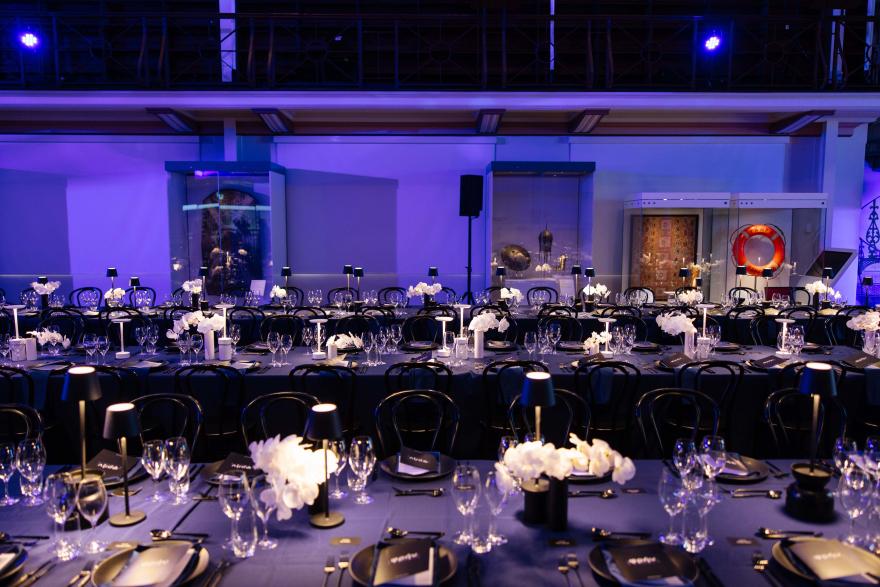
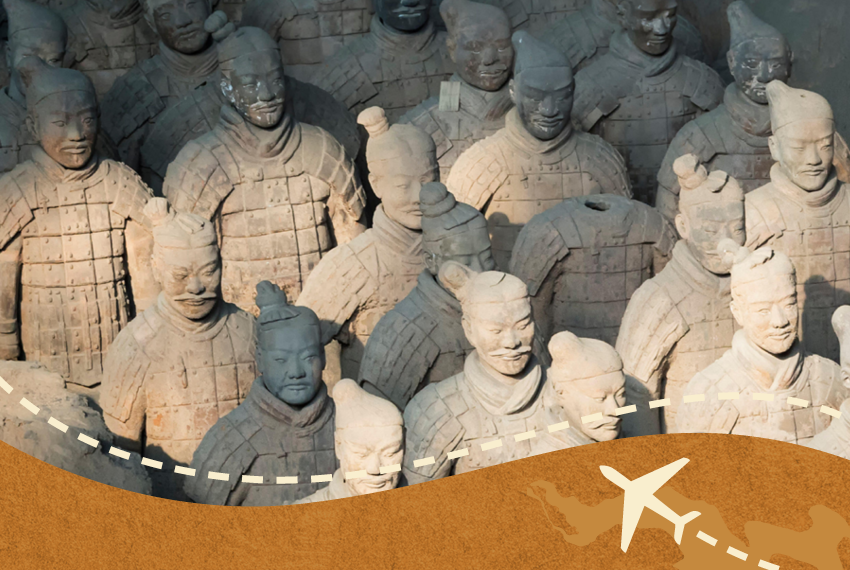
WIN a trip for two to Xi'an, China
Win the ultimate trip for two to China to see the Terracotta Warriors thanks to WA Museum, Cathay Pacific and Juyo Travel.
We’re giving you the chance to win return flights for two to China, 5 nights in a 5-star hotel in the heart of Xi’an and airport transfers in China. Plus, a guided city tour and visit to the Terracotta Warrior Mausoleum.
Enter now by purchasing your exhibition ticket online and agreeing to becoming a WA Museum subscriber.
This exhibition is a collaboration between the People’s Republic of China Shaanxi Provincial Bureau of Cultural Heritage, the Shaanxi Provincial Cultural Heritage Promotion Centre, the Emperor Qin Shihuang’s Mausoleum Site Museum and the Western Australian Museum.
